Google Ads, formerly known as Google AdWords, were first launched in 2000. It was one of the first services advertised by Google whereby users could use it for online promotion of their content, websites, products, and services. Usually, users use particular defined keywords depending on the subject and content of the advertisement. The keywords assist in driving traffic or lead to a user’s website.
Google AdWords incorporates advertisements with keywords usually displayed in Google web pages and the Google’s partner website known as publishers. Google adverts users pay for the services to be ranked or displayed on various platforms affiliated with google. The adverts also appear on google.com or other websites through display network and Google Adsense program. To use Google Ads, users have to create an on the google.com platform. The account is free, and users will only pay for advertising campaigns they click. The system is known as cost per click bidding, which means that a user pays for each click made on their adverts. For the CPC bidding campaigns, a user typically sets a maximum cost per click bid, also known as “max. CPC. Such refers to the highest amount the user is willing to pay for a click on their adverts.
Uses of Google Ads
Google Ads promote businesses, help individuals, organizations, and firms sell their products or services, raise brand awareness on products and services, and help direct and increase traffic to a seller’s website. Usually, users or marketers who opt to use Google Ads create accounts that they manage online. From the accounts, they can create and change their advertising campaigns at any time, including the text, setting, and budgets.
How to implement Google Ads:
The following are the steps to implementing Google AdWords.
1. Create an account and sign up. For this, go to the Google Ads website, create a free account, sign up with an email, and input a password.
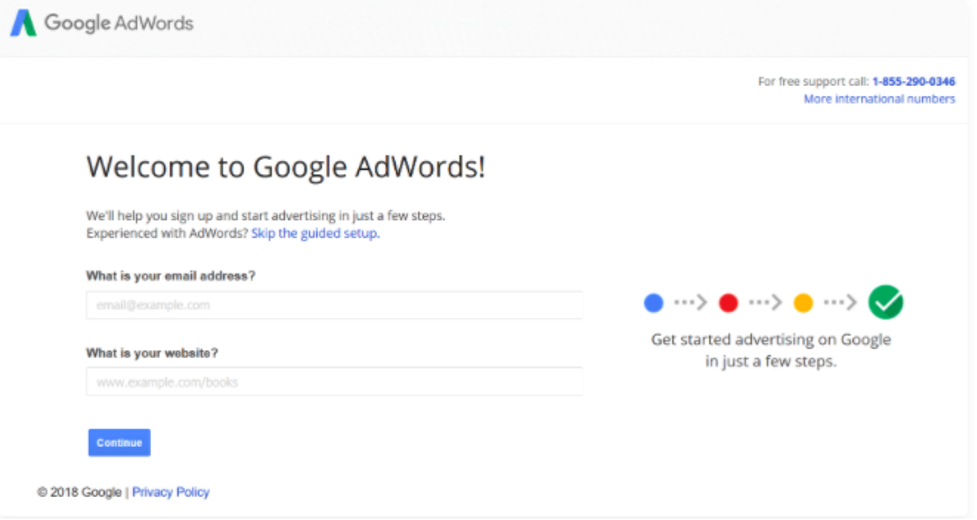
After creating your account, the next step is creating your campaign.
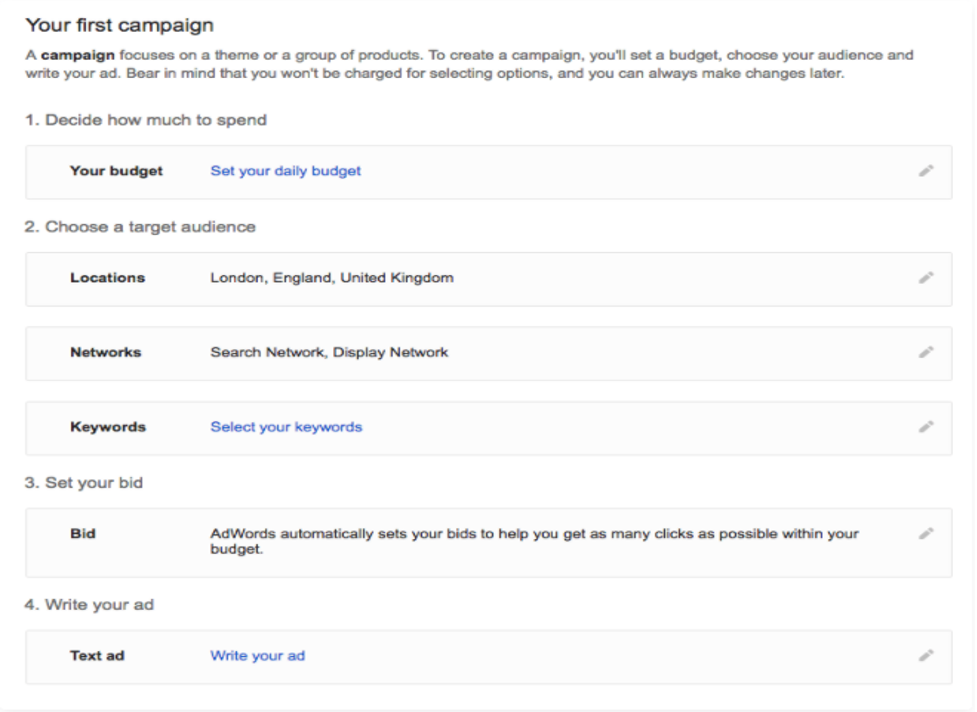
2. The second step is to set up your advertising budget. A budget will help you ensure that you do not cross your expenditure limits. It is vital first to learn and understand your audience and the number of visitors that are convertible into customers from your landing page to set the correct budget as a user. In case you are a new start-up, you may opt to work with averages depending on your budget.
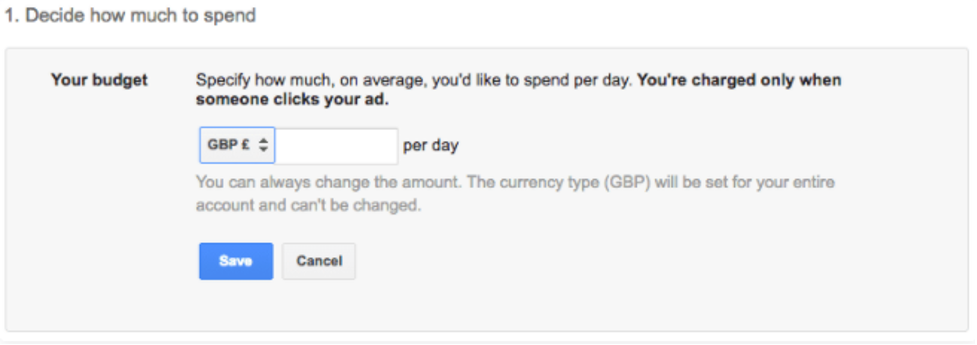
3. After setting the budget, you should select your target audience to help skew down or narrow your advert scope. In this case, the target audience includes age demographics, location, and preferred gender as either male or female. The features will ensure that your advert only shows specific users that search using the keywords you specified.
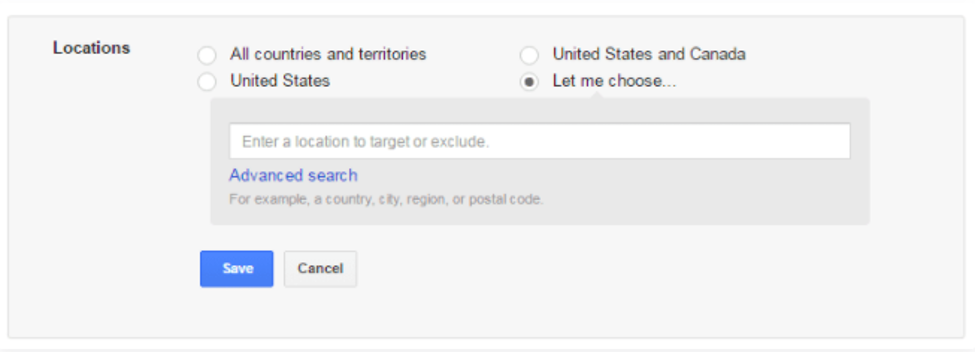
4. Step number four involves choosing your network.
In this step, you will choose the most suitable network for your advert depending on your business’s size. The options available are the search network will put your adverts on the Google search engine results pages (SERPS). Such is recommended for start-ups and small businesses because it focuses on keywords relevant to your business. On the other hand, display networks display your advert on affiliated google websites. Display networks are recommended for big and well-established brands because they are excellent for brand building, retargeting adverts, and lower cost per click.
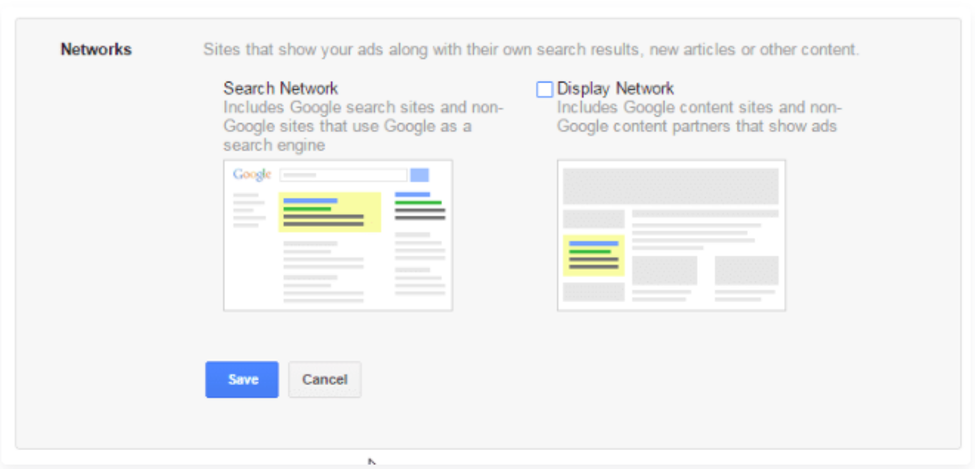
5. Select your preferred keywords
Keywords refer to the search phrases that a user will use to search for a particular item on the google search engine. Usually, google lets users choose an average of fifteen to twenty keywords to enable an advert to appear on SERP. However, you have the opinion of adding more keywords later. While choosing the appropriate keywords, you should consider using highly searched keywords. Usage of keywords should search for how they do not rank as negative keywords making an advert unable to appear in the correct search results. It would be best to opt for lesser keywords that rank highly in search volumes and relevance within your chosen target market. For example, how a country like China addresses a particular project may differ from how the United States addresses it. Therefore, it is crucial to choose the right words for the right audience. It is also important to note that AdWords works on a bidding strategy; therefore, keywords that have a higher search volume are a bit expensive, meaning that you have to work within your budget to avoid depletion before the intended period advert. Therefore, you may also opt to keep your costs manageable by choosing adverts with moderate search volumes.
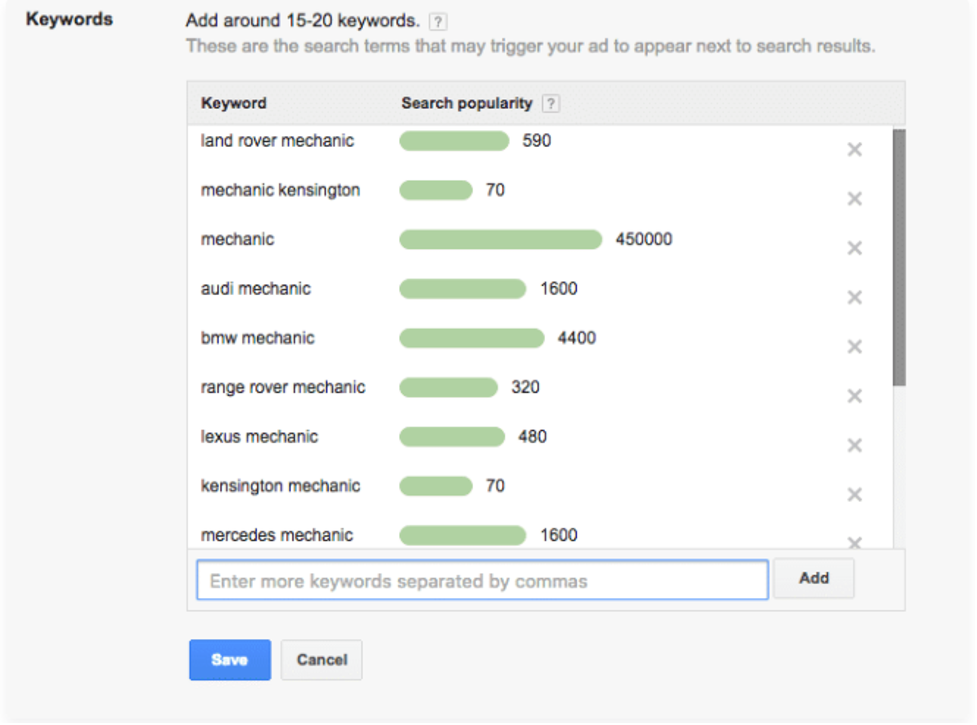
6. You should then select your bid.
A refers to the amount of money you are willing to spend for every person who clicks on your Google advert. As previously mentioned, the cost per click depends on the search volume of the selected keyword versus your budget. Therefore, it is vital to select a bid that favors your budget, enabling your advert to run through its specified time.

7. Write your advert
At this juncture, you should then write your bid. You should ensure that it is very compelling and convincing to enable your target audience to have your interest in clicking it. You should communicate your message such that you avoid using very complicated terms that confuse your audience.
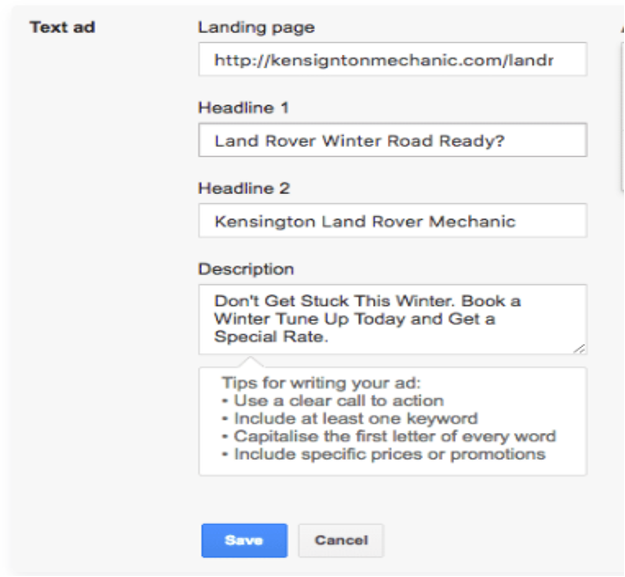
8. Create your advert
After you have written your advert, click on the Save button. Afterward, proceed to the payment process, which is the last step. At this juncture, google prompts you to fill in your business and payment information. Google charges you after you deplete your budget or thirty days later.
Best Practices
Some of the basic guidelines to writing your message are;
- It would be best if you kept it precise and to the point. The space to write your text is limited. Therefore, it is vital you keep your message short and to the point.
- Having an attractive headline because it is the first thing your audience comes across and makes him decide on whether to click your advert or not.
- Have a clear call to action that defines that tells an audience what you expect them to do with your advert
The Anatomy of a Google advert
- The headline – It allows an advert to include. The Google advert gives the user options, including up to two headlines, each having thirty characters. It is also essential to include some of your selected keywords in your headline.
- Description – It refers to the space to describe your words up to eighty characters. Therefore, it is vital to utilize this space by only inputting the crucial message and call to action. Also, if you have special offers like discounts, ensure you list them here.
Conclusion
Google Ads is a powerful and crucial tool that helps businesses acquire new customers and maintain brand visibility. However, a user may incur high costs if they do not effectively and efficiently use the costs in the best way possible to reach a large audience with the highest conversion rate possible.